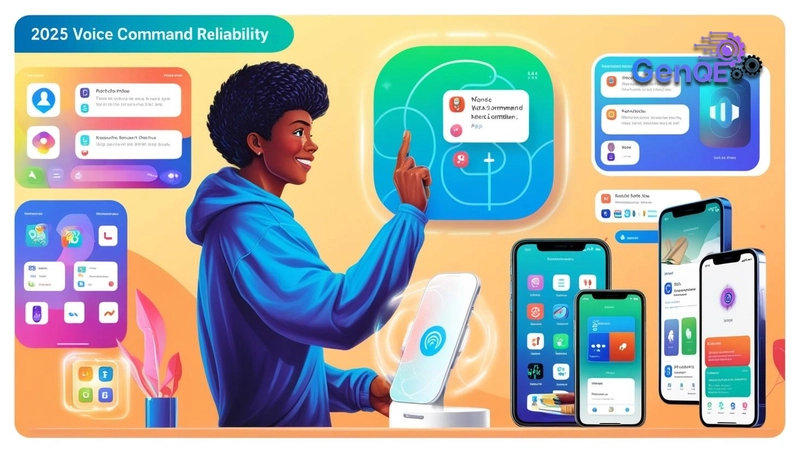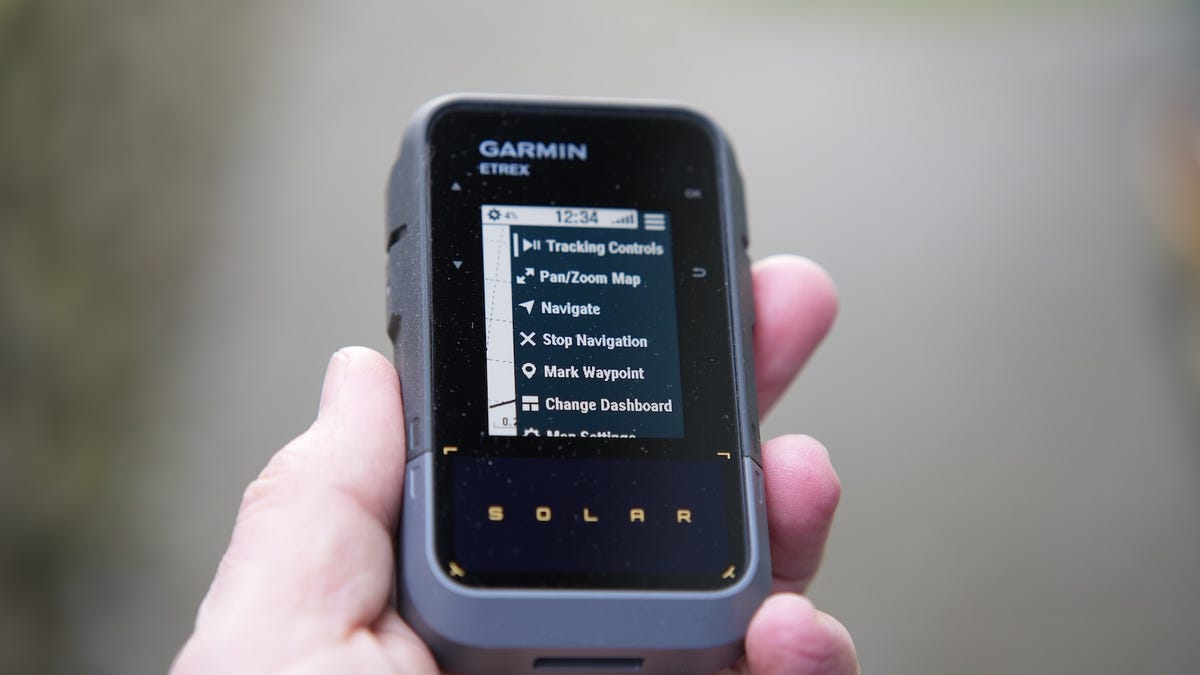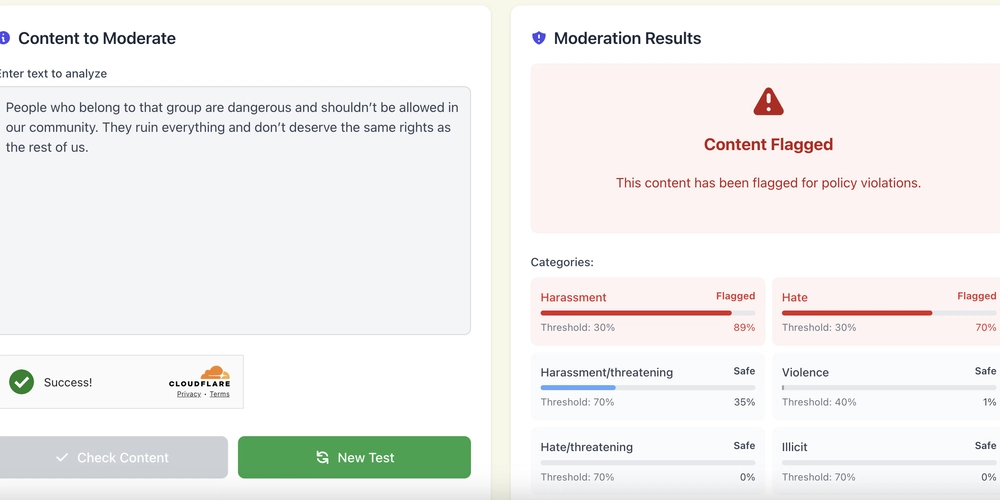Testing Apps for Voice Command Reliability in 2025
Introduction I talk to my phone more than ever — asking it to set reminders, play music, or find directions while I’m driving. But it doesn’t always listen right. Last week, I told my calendar app to “set a meeting at noon,” and it added a note for “moon.” My music app skipped my playlist when I said “play rock” — it heard “stop.” In April 2025, software testing is focusing on this one issue — making sure apps understand my voice commands clearly. This isn’t a broad tech roundup or a jargon-heavy slog. It’s a deep, simple story about how testers and developers get apps to hear me right, told from my perspective as someone who just wants their words to work. The Voice Command Problem Voice commands should be easy, but apps often mishear. My calendar app mangles my schedule — meetings get lost in bad translations. My music app plays the wrong songs or stops entirely. My navigation app misreads “go home” as “go to Rome” — not helpful mid-drive. People use voice for convenience — hands-free, quick tasks — but when apps fumble, it’s more hassle than help. A friend’s smart home app turned off her lights when she said “bright” — she was left in the dark. In 2025, testers are ensuring apps catch my words, not guess them. Why It’s a Big Deal This isn’t just about mix-ups — it’s about my day. I set reminders by voice while cooking — wrong entries mess my schedule. I play music hands-free in the car — misheard commands kill the mood. I navigate by voice to stay safe — bad directions throw me off. It’s not just me — my mom sets alarms for meds, my brother controls his smart lights, my friend dials calls on the go. Voice is our shortcut. Testing for reliability means I plan, listen, drive — no redo. In 2025, it’s about apps hearing me like a friend, not a stranger. How Testers Get Started Testers act like they’re talking to the app. They load my calendar app on a phone — my mid-range model, not a lab gadget. They say “set a meeting at noon” — does it add it? They try my music app — “play rock” — does it queue? They test my navigation app — “go home” — does it route? They use real phones — old, like mine — not just new ones. They speak in quiet rooms, noisy streets, with accents. They log every error — meeting at “moon,” playlist stopped, route to “Rome.” In 2025, they’re testing my voice, catching what apps miss. What They Uncover Testers find plenty wrong. My calendar app misheard “noon” as “moon” — it didn’t check context. My music app took “play rock” as “stop” — it rushed to guess. My navigation app didn’t filter noise — car hums mixed up “home.” Accents tripped apps — my slight drawl threw it off. Small phones struggled — weak mics missed soft voices. They saw apps lean on shaky voice tech — built for ideal speech, not real life. They list it all — every mishear, every skip — that breaks my flow. In 2025, they’re spotting where apps go deaf. How Developers Fix It Developers take the notes and tune things up. My calendar app’s “moon” error? They add context — time words like “noon” go to schedules, not notes. My music app’s “stop” mix-up? They train it — rock means genre, not pause. My navigation app’s noise issue? They filter — car sounds don’t override “home.” They tweak for accents — my drawl works now. They boost mics — my phone hears soft talk. Testers retry — speak, command, check. Now I set meetings, play tunes, get home — no mistakes. In 2025, developers make apps listen like I need. My Apps Today My apps hear me now. I told my calendar app “meeting at three” today — added right, no “tree.” I said “play rock” to my music app — playlist rolled, no stop. I voiced “go home” on my navigation app — routed perfect, no “Rome.” Before, I’d repeat or give up — wrong tasks, no music, lost drives. Testing for voice command reliability fixed this one thing. In 2025, I’m talking, and apps are listening — clear and easy. The Full Testing Process Testers cover every angle. They try all commands — “set alarm,” “play jazz,” “find store.” They test voices — loud, soft, accented, mumbled. They check settings — quiet rooms, busy cafes, car noise. They use phones like mine — low-end, old mic — does it hear? They push combos — “play next, then pause” — does it follow? They try errors — slurred words, cut-off speech — does it recover? They stress it — thousands speak at once — does it hold? In 2025, they’re making sure every word I say lands right. Why Voice Is Tricky Apps struggle with speech. Developers prioritize screens — my calendar app focused on taps, not voice. Voices vary — my pitch, my mom’s tone, my friend’s accent. Noise interferes — street sounds, radio chatter. Phones differ — my cheap mic’s not a flagship’s. Words overlap — “play” could mean music or games. Testers get it — they don’t expect perfect; they demand clear. In 2025, they’re fixing what’s misheard for too long. What I Get Out of It This

Introduction
I talk to my phone more than ever — asking it to set reminders, play music, or find directions while I’m driving. But it doesn’t always listen right. Last week, I told my calendar app to “set a meeting at noon,” and it added a note for “moon.” My music app skipped my playlist when I said “play rock” — it heard “stop.” In April 2025, software testing is focusing on this one issue — making sure apps understand my voice commands clearly. This isn’t a broad tech roundup or a jargon-heavy slog. It’s a deep, simple story about how testers and developers get apps to hear me right, told from my perspective as someone who just wants their words to work.
The Voice Command Problem
Voice commands should be easy, but apps often mishear. My calendar app mangles my schedule — meetings get lost in bad translations. My music app plays the wrong songs or stops entirely. My navigation app misreads “go home” as “go to Rome” — not helpful mid-drive. People use voice for convenience — hands-free, quick tasks — but when apps fumble, it’s more hassle than help. A friend’s smart home app turned off her lights when she said “bright” — she was left in the dark. In 2025, testers are ensuring apps catch my words, not guess them.
Why It’s a Big Deal
This isn’t just about mix-ups — it’s about my day. I set reminders by voice while cooking — wrong entries mess my schedule. I play music hands-free in the car — misheard commands kill the mood. I navigate by voice to stay safe — bad directions throw me off. It’s not just me — my mom sets alarms for meds, my brother controls his smart lights, my friend dials calls on the go. Voice is our shortcut. Testing for reliability means I plan, listen, drive — no redo. In 2025, it’s about apps hearing me like a friend, not a stranger.
How Testers Get Started
Testers act like they’re talking to the app. They load my calendar app on a phone — my mid-range model, not a lab gadget. They say “set a meeting at noon” — does it add it? They try my music app — “play rock” — does it queue? They test my navigation app — “go home” — does it route? They use real phones — old, like mine — not just new ones. They speak in quiet rooms, noisy streets, with accents. They log every error — meeting at “moon,” playlist stopped, route to “Rome.” In 2025, they’re testing my voice, catching what apps miss.
What They Uncover
Testers find plenty wrong. My calendar app misheard “noon” as “moon” — it didn’t check context. My music app took “play rock” as “stop” — it rushed to guess. My navigation app didn’t filter noise — car hums mixed up “home.” Accents tripped apps — my slight drawl threw it off. Small phones struggled — weak mics missed soft voices. They saw apps lean on shaky voice tech — built for ideal speech, not real life. They list it all — every mishear, every skip — that breaks my flow. In 2025, they’re spotting where apps go deaf.
How Developers Fix It
Developers take the notes and tune things up. My calendar app’s “moon” error? They add context — time words like “noon” go to schedules, not notes. My music app’s “stop” mix-up? They train it — rock means genre, not pause. My navigation app’s noise issue? They filter — car sounds don’t override “home.” They tweak for accents — my drawl works now. They boost mics — my phone hears soft talk. Testers retry — speak, command, check. Now I set meetings, play tunes, get home — no mistakes. In 2025, developers make apps listen like I need.
My Apps Today
My apps hear me now. I told my calendar app “meeting at three” today — added right, no “tree.” I said “play rock” to my music app — playlist rolled, no stop. I voiced “go home” on my navigation app — routed perfect, no “Rome.” Before, I’d repeat or give up — wrong tasks, no music, lost drives. Testing for voice command reliability fixed this one thing. In 2025, I’m talking, and apps are listening — clear and easy.
The Full Testing Process
Testers cover every angle. They try all commands — “set alarm,” “play jazz,” “find store.” They test voices — loud, soft, accented, mumbled. They check settings — quiet rooms, busy cafes, car noise. They use phones like mine — low-end, old mic — does it hear? They push combos — “play next, then pause” — does it follow? They try errors — slurred words, cut-off speech — does it recover? They stress it — thousands speak at once — does it hold? In 2025, they’re making sure every word I say lands right.
Why Voice Is Tricky
Apps struggle with speech. Developers prioritize screens — my calendar app focused on taps, not voice. Voices vary — my pitch, my mom’s tone, my friend’s accent. Noise interferes — street sounds, radio chatter. Phones differ — my cheap mic’s not a flagship’s. Words overlap — “play” could mean music or games. Testers get it — they don’t expect perfect; they demand clear. In 2025, they’re fixing what’s misheard for too long.
What I Get Out of It
This testing saves my day. I don’t re-speak — meetings set, I’m on time. I don’t fight music — rock plays, I’m vibing. I don’t get lost — home routes, I’m safe. Before, I’d yell or quit — wrong actions, no songs, bad turns. Now, it’s smooth. It’s one piece — voice reliability — but it’s my hands-free life. In 2025, I talk to apps, and they answer right, because testers made them hear.
Testing Across Apps
Testers don’t stop at mine. My mom’s health app sets med alarms — voice works now. My brother’s smart home app dims lights — commands clear. My friend’s call app dials contacts — says names, connects. They use every phone — old, weak, mine. They want all apps voice-ready — not just my calendar. In 2025, this testing makes every spoken task work, for everyone.
The Challenges
It’s not all easy. Some apps mishear — my game app takes “start” as “stop.” Weak mics falter — my phone drops quiet words. Noise persists — crowds confuse commands. Testers catch this. Developers adjust — better training, stronger filters — but it’s slow. Companies focus on flash — voice lags behind. In 2025, testers push for clarity, even when it’s tough.
How They Know It’s Right
Testers measure it. They time my calendar app — “noon” sets in one second, not five. They count errors — zero “moons,” not three. They ask me — works? I say yes. They test mixes — “play, skip” — no clash. They push loads — millions speak, no crash. They use stats — accuracy, speed, uptime — to prove it’s good. In 2025, they’re showing voice works, not guessing.
Where It’s Going
This could spread. My calendar app hears — my email app doesn’t. Testers might fix “send mail” commands. My shop app — voice orders could work. Every app could listen — games, maps, news. In 2025, voice testing might mean no app ever mishears a word I say.
Why Companies Care
Companies know I’ll ditch apps that don’t hear — my calendar app keeps me because it listens. My brother stays with his smart home — lights obey, he’s hooked. Good voice keeps users — bad voice loses them. It’s not just smart — it’s profit. In 2025, testing this holds customers and cash.
The Future Ahead
This could change apps long-term. If testers keep pushing, new apps might launch voice-ready — no fixes needed. Developers might train for all speech — accents, mumbles, noise. My next app might hear me perfectly from day one. In 2025, this one focus could make talking to apps as natural as talking to a friend.
Conclusion
Testing apps for voice command reliability in 2025 is a big step. It keeps my meetings set, music playing, routes clear — no mishears, just action. Testers catch the flubs, developers fix them, and I’m heard. This isn’t about all tech — it’s about my voice, working right. It’s enough to make my phone feel alive. How’s your app listening to you?


































































![Apple Watch Series 10 Back On Sale for $299! [Lowest Price Ever]](https://www.iclarified.com/images/news/96657/96657/96657-640.jpg)
![Apple Slips to Fifth in China's Smartphone Market with 9% Decline [Report]](https://www.iclarified.com/images/news/97065/97065/97065-640.jpg)
![EU Postpones Apple App Store Fines Amid Tariff Negotiations [Report]](https://www.iclarified.com/images/news/97068/97068/97068-640.jpg)












![What’s new in Android’s April 2025 Google System Updates [U: 4/18]](https://i0.wp.com/9to5google.com/wp-content/uploads/sites/4/2025/01/google-play-services-3.jpg?resize=1200%2C628&quality=82&strip=all&ssl=1)





























































































_Andreas_Prott_Alamy.jpg?width=1280&auto=webp&quality=80&disable=upscale#)






















































































![[The AI Show Episode 144]: ChatGPT’s New Memory, Shopify CEO’s Leaked “AI First” Memo, Google Cloud Next Releases, o3 and o4-mini Coming Soon & Llama 4’s Rocky Launch](https://www.marketingaiinstitute.com/hubfs/ep%20144%20cover.png)








































































































































































































































